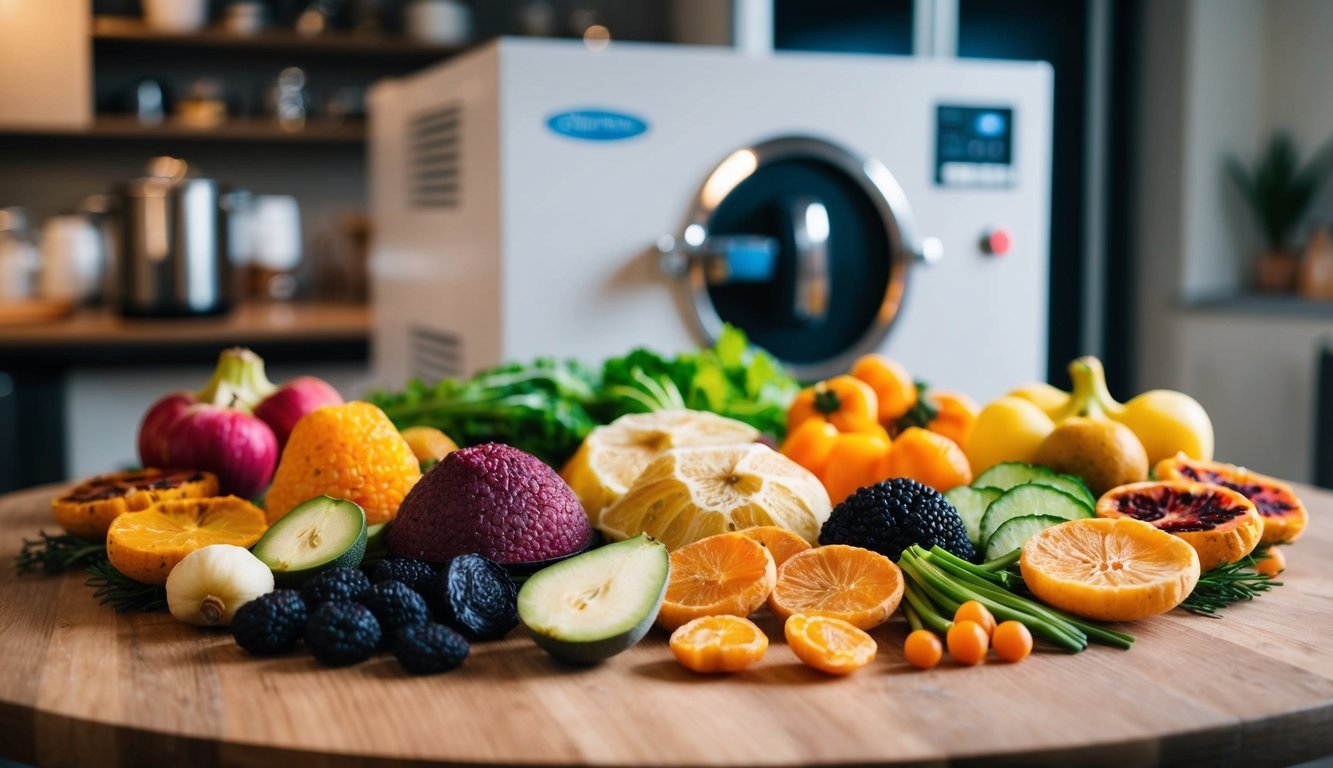
Sharing my adventures in freeze drying on Instagram sparked a wave of curiosity and excitement from my followers.
One question emerged repeatedly: what’s the difference between freeze-drying and dehydrating? This growing interest in freeze drying as a method of food preservation inspired me to create this guide.
In the following sections, I will clarify the key differences between freeze drying and dehydration and offer practical tips for newcomers to the process.
Whether you’re curious about the technical aspects, seeking advice on setting up a freeze dryer, or simply looking for a starting point, you’ll find useful insights here.
By the conclusion of this guide, you’ll be ready and confident to start your freeze-drying journey.
Freeze Drying vs. Dehydrating: What You Need to Know
Freeze drying and dehydrating are both popular food preservation techniques, but they differ significantly.
Dehydration is an age-old method that removes moisture from food.
Traditionally, this was done using sunlight to dry various foods, from meat and fish to fruits.
Nowadays, most people use electric dehydrators, which apply heat to achieve similar results.
While this method helps extend the shelf life of food, it often leads to a loss of about 50% of nutrients and can negatively affect the food’s flavor, texture, and appearance.
In contrast, freeze drying is a more advanced approach that emerged in the early 20th century.
This method involves using specialized equipment to subject food to extremely low temperatures (around -40°F or -40°C).
A vacuum is then created, allowing the moisture to escape as vapor, bypassing the liquid phase entirely.
This innovative process ensures the food retains its structure, flavor, and nutritional benefits, making freeze-dried products superior in taste and texture compared to dehydrated alternatives.
Why Freeze Drying is the Superior Choice
The benefits of freeze drying compared to traditional dehydration methods are remarkable.
Freeze-dried foods not only taste better but also preserve a higher percentage of their nutrients.
The gentle removal of moisture at low temperatures helps lock in the original flavors and textures, so that when you rehydrate freeze-dried items, they almost replicate the freshness of the original foods—be it fruits, vegetables, meats, or snacks.
Practical Tips for Freeze-Drying Newbies
- Choosing the Right Spot for Your Freeze Dryer: When setting up your freeze dryer, think about temperature stability.
A hot environment can cause problems since the machine generates heat.
Ideally, you should place it in a cooler, well-ventilated space, such as a basement or laundry room.
- Selecting a Cart for Your Freeze Dryer: Opt for a sturdy cart that can support at least 250 pounds.
A stable base minimizes the risk of tipping or shifting during operation and makes it easier to move the unit when necessary.
- Get Acquainted with Your Machine: Before diving in, take time to learn the specifics of your freeze dryer.
Reading the owner’s manual and exploring online resources from the manufacturer will greatly improve your outcomes.
- Ensure Even Cutting for Best Results: For optimal freeze-drying, cut your food into small and uniform pieces.
Different ingredients have varying moisture levels and drying times, so consistent sizing helps ensure even drying.
- Start with Easy Ingredients: If you’re new to freeze drying, begin with simple items like herbs.
They are easy to prep, dry quickly, and maintain their flavor well, making them perfect for your initial attempts.
- Storing Freeze-Dried Foods Properly: How you store your freeze-dried goods will depend on your plans.
For short-term storage, use half-gallon glass canning jars with airtight lids.
If you’re looking to preserve food for the long haul—up to 25 years—mylar bags with oxygen absorbers are an excellent option.
Common Questions About Freeze Drying
- What is freeze drying?
Freeze drying is a food preservation technique where food is frozen, subjected to a vacuum, and gradually heated to remove moisture. - How does it compare to dehydrating?
While dehydration utilizes heat to remove moisture, which can alter taste and nutrients, freeze drying employs low temperatures and a vacuum to maintain these qualities. - What kinds of foods can be freeze dried?
Nearly all foods can be freeze-dried, including fruits, vegetables, herbs, meats, dairy products, and complete meals. - Is special equipment needed for freeze drying?
Yes, effective freeze drying requires specially designed machines capable of freezing food, creating a vacuum, and efficiently removing moisture. - How long does freeze drying take?
Typically, the process can last anywhere from 24 to 48 hours, depending on the food type and quantity. - Where should I install a freeze dryer?
A cool, well-ventilated place like a basement or laundry room is ideal for optimal performance. - What storage method is best for freeze-dried foods?
For short-term, choose glass jars with airtight lids.For long-term, use mylar bags with oxygen absorbers for optimal preservation.
- Does freeze drying effectively retain nutrients?
Absolutely! Freeze drying preserves a significant majority of a food’s nutrients, often exceeding those retained through dehydration. - Is freeze drying a safe method for preserving food?
Yes, when done correctly with a quality freeze dryer following the manufacturer’s instructions, it is a safe and efficient food preservation method.
If you found this guide helpful, feel free to share it with others interested in starting their freeze-drying adventure!
Source: Growinginthegarden

